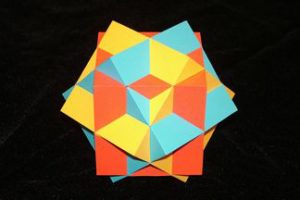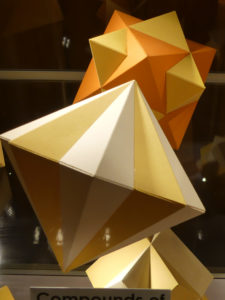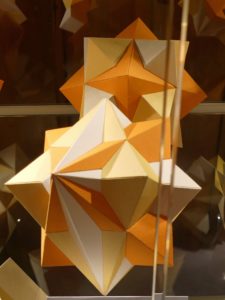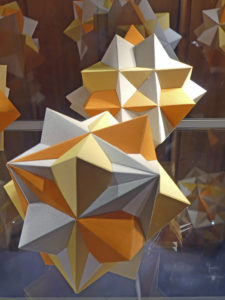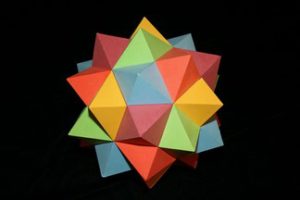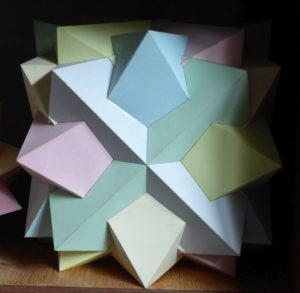Constructing endless compounds doesn’t really contribute much to the mathematical understanding of polyhedra: but some of the compound structures are pretty, and the mindwork to understand their construct is sometimes a bit stretching. So here we’ll spend some time considering compounds of 2, 3, 4 and 5 Cubes, and 2, 3 4 and the familiar 5 and 6 Octahedra.
Very useful here is the Derrick Breach Collection at the University of Canterbury at Christchurch, New Zealand. The collection is actually enormous and contains at least all the Uniform Polyhedra we’ve discussed earlier – but the photographs here are from just a part of the collection shown at regular Mathscraft NZ events.
We’ll begin with the Compound of 3 Cubes, a shape which features in various mediaeval etchings and carvings. Although it seems an easy model in concept, it’s just complex enough to be tricky to build. In modern times, M C Escher featured it alongside the Stella Octangula in at least one of his works:
Before this, of course, we should have considered the Compound of 2 Cubes – though since this is so simple it seems a bit of a cheat to give it a great deal of attention.

Derrick Breach also gives us a Compound of 4 Cubes:
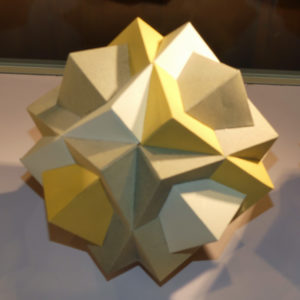
Now we turn to Compounds of Octahedra.
Derrick Breach offers us Compounds of 2, 3 and 4 Octahedra, with each case in 2 alternative forms:
We’ve already seen the Compound of 5 Octahedra:
Lastly in this section I’ll note 2 Compounds of 3 and 6 Octahedra that have popped up on the internet recently. I haven’t made these yet but the geometry has been quite fun to work out – so I might get round to them sometime:
That’s all there is to say about Compounds, but Duality produces some amazingly weird shapes. Come along now to Duals


